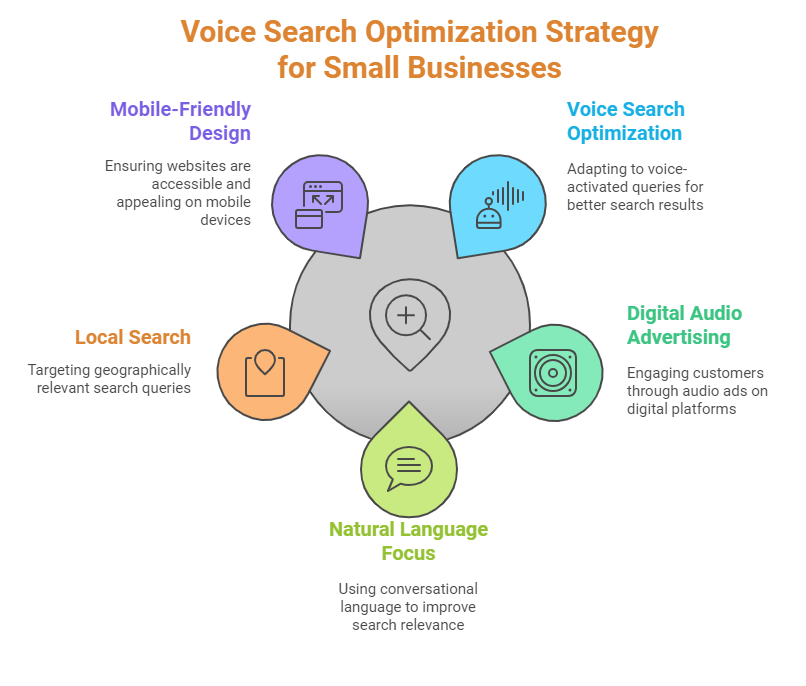The rise of voice search is reshaping the digital marketing landscape. With the increasing use of voice-activated assistants like Alexa, Siri, and Google Assistant, small businesses must adapt to remain competitive. Voice search optimisation is no longer optional—it’s essential for improving online visibility, engaging local customers, and staying ahead of the curve. In this guide, we’ll explore actionable strategies to prepare your business for the audio revolution.
Understanding Voice Search
Voice search differs significantly from traditional text-based searches. It relies on natural language processing, which means users often phrase queries conversationally. For instance, instead of typing “best coffee shop London,” a user might ask, “Where’s the best coffee shop near me?” This shift has profound implications for how businesses optimise their content.
Voice-activated assistants like Alexa and Google Assistant use algorithms to deliver precise, context-driven answers. These devices prioritise featured snippets, local search results, and highly relevant content. As a result, businesses that embrace voice search stand to gain a competitive edge.
“Voice search is not just a trend; it’s a fundamental shift in how users interact with technology. Businesses that fail to adapt risk becoming invisible in the digital age.” – Neil Patel, Digital Marketing Expert
Optimising for Voice Search
Focus on Natural Language
When optimising for voice search, it’s crucial to use long-tail keywords and phrases that mimic natural speech patterns. For example, instead of targeting “plumber London,” consider phrases like “Who’s the best plumber in London?”
- Incorporate conversational content into your website.
- Answer common customer questions directly in your copy.
- Create FAQ sections that address user intent.
Optimise for Local Search
Voice search is inherently local. Many users ask location-specific queries like “restaurants near me” or “best hairdresser in [city].” To capture this traffic, ensure your Google Business Profile is fully optimised.
- Include accurate NAP (Name, Address, Phone) details.
- Add location-specific keywords to your content.
- Encourage customers to leave reviews to boost credibility.
Enhance Mobile Friendliness
Most voice searches are conducted on mobile devices. A mobile-friendly website is essential for delivering a seamless user experience. Use Google’s Mobile-Friendly Test to ensure your site meets the required standards.
Leveraging Google My Business
Your Google My Business profile is a powerful tool for appearing in local voice search results. Ensure all information is accurate, complete, and updated regularly. Add high-quality photos, respond to reviews, and post updates to engage customers.
Consistency is key. Ensure your business name, address, and phone number are the same across all platforms, including social media, your website, and online directories. This builds trust with both users and search engines.
Building Credibility with Reviews
Customer reviews are a cornerstone of voice search optimisation. Positive reviews signal to search engines that your business is trustworthy and relevant. Actively encourage satisfied customers to leave reviews on Google, Yelp, and other platforms.
Engage with reviewers—thank them for positive feedback and address any negative reviews professionally. This not only improves your reputation but also boosts your visibility in search results.
Implementing Speakable Schema Markup
Speakable Schema markup is a technical tool that helps search engines identify content suitable for voice search. By implementing this markup, you increase the likelihood of your content being featured in voice search results.
For example, you can use Speakable Schema to highlight key points in blog posts, FAQs, or service descriptions. Learn more about Schema markup from Schema.org.
Integrating Digital Audio Advertising
Reaching a Broader Audience
Digital audio advertising is a complementary strategy to voice search optimisation. Platforms like Spotify and Pandora allow businesses to reach a tech-savvy, engaged audience. With the rise of podcasting and streaming, digital audio consumption is at an all-time high.
Targeting Local Audiences
Local targeting is a significant advantage of digital audio ads. Platforms like Spotify Ad Studio enable businesses to target listeners by postal code, ensuring your ads reach the right audience.
Cost-Effective Creative Solutions
Creating digital audio ads is surprisingly affordable. Many platforms offer free tools to help small businesses produce professional-quality ads. With quick turnaround times, you can launch campaigns in days rather than weeks.
Conclusion
Voice search optimisation and digital audio advertising are no longer optional—they’re essential strategies for small businesses looking to thrive in the digital age. By focusing on natural language, local search, and mobile-friendly design, you can enhance your online visibility and attract more customers.
Don’t wait for your competitors to take the lead. Start optimising your business for voice search today, and explore the potential of digital audio advertising to reach new audiences. Contact us to learn how we can help you implement these strategies effectively.

